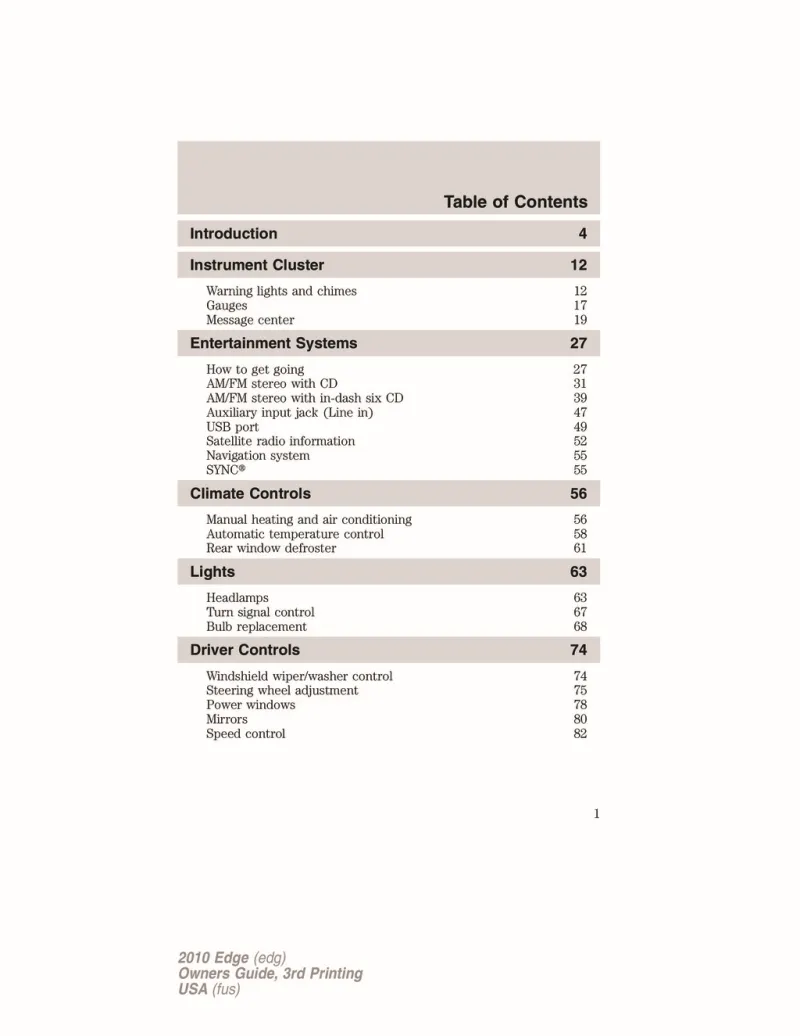2010 Ford Edge Owner's Manual

Table of Contents
2010 Ford Edge Overview
Introduction
The 2010 Ford Edge is a stylish, midsize crossover SUV that expertly balances modern design, robust performance, and a wealth of technology features. As a versatile option for families and individuals alike, the Edge boasts ample cargo space and comfortable seating, making it an ideal companion for both weekend adventures and daily commutes. With its bold exterior and contemporary interior, the 2010 Forge Edge stands out on the road.
Powertrains
Under the hood, the 2010 Ford Edge offers two powerful engine options to suit different driving needs. Standard is a capable 3.5-liter V6 engine that produces 265 horsepower and 250 lb-ft of torque, paired with a smooth six-speed automatic transmission. For those seeking enhanced performance, an available 2.7-liter turbocharged V6 engine delivers an impressive 325 horsepower. Both engines provide an engaging driving experience with choices for front-wheel or all-wheel drive, ensuring traction and stability in various road conditions.
Trims
The 2010 Ford Edge is available in several trims, including the base SE, the mid-level SEL, and the premium Limited trim. Each trim level offers an array of features that cater to different preferences and budgets. The SE provides essentials like air conditioning and an audio system, while the SEL includes upgrades such as a larger touchscreen interface and enhanced interior materials. The Limited trim elevates the driving experience with luxurious touches like leather upholstery, advanced infotainment options, and a premium sound system.
Features
With cutting-edge technology and safety features, the 2010 Ford Edge ensures a comfortable and secure ride. Standard equipment includes an auxiliary audio jack, keyless entry, and a tire pressure monitoring system. Available features encompass a rearview camera, navigation system, Bluetooth connectivity, and advanced safety options such as traction control and multiple airbags.
Owner's Manual
The 2010 Ford Edge comes with a detailed owner's manual that provides essential information on vehicle operation, maintenance schedules, and safety tips. This comprehensive guide aids owners in maximizing their driving experience while ensuring proper care and upkeep, making the vehicle a reliable choice for years to come.
User manual download
The Ford Edge owner manual for the 2010 model year is to be found in PDF downloadable format on this page. The owner manual for the model year 2010 is free and in English, but the repair manuals are usually not easy to get and may cost more.
Manual Questions
Fill the form below and someone will help you!

